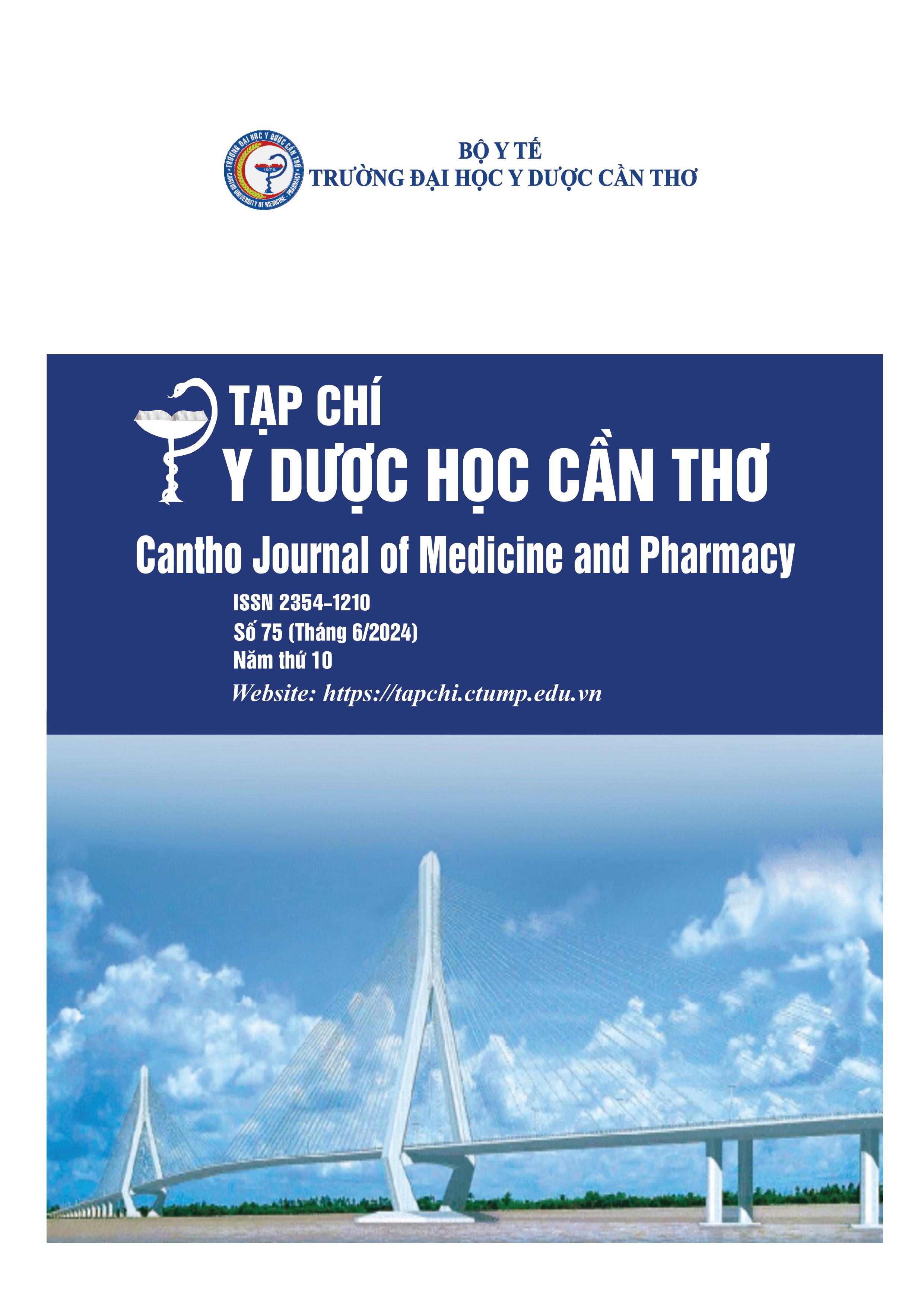BOTANICAL AND PRELIMINARY CHEMICAL COMPOSITION OF PHYLLANTHUS RETICULATUS
Main Article Content
Abstract
Background: Phyllanthus reticulatus is a wild plant that grows in fences or abandoned places from North to South in Vietnam. In folk medicine, this plant has effects such as treating dysentery, enteritis, intestinal lymphadenopathy, diarrhea, hepatitis, nephritis, treating fever, boils, blood stasis due to falls, and blood heat leading to boils. In Vietnam, there is currently no research on plant characteristics and preliminary chemical composition of plants. Objective: To study on botanical and preliminary chemical composition in three parts (leaf, stem, and root) of Phyllanthus reticulatus. Materials and methods: Leaves, stems, and roots of Phyllanthus reticulatus were collected in Ninh Kieu district, Can Tho city in March 2024, botanical research was conducted such as plant characterization, microsurgery and powder examination observed under an optical microscope. Determination of medicinal powder moisture and preliminary phytochemical analysis in 03 parts: leaf, stem, and root of Phyllanthus reticulatus. Results: The plant characteristics were studied, microdissection, powder examination of 12 components, moisture content of all 3 parts ranged from 7.74 - 8.55%, preliminary phytochemical composition determined. There are 10 groups of chemical compounds found in plants, typically flavonoid compounds in leaves. Conclusion: The plant characteristics, microanatomy and medicinal powder and preliminary chemical composition of the 3 roots, stem and leaves of the Phyllanthus reticulatus have been described, serving as a scientific basis for in-depth research on this plant in Vietnam.
Article Details
Keywords
Phyllanthus reticulatus, botanical characteristic, preliminary chemical composition
References
2. Das BK, Bepary S, Datta BK, Chowdhury AA, Ali MS, Rouf AS. Hepatoprotective activity of Phyllanthus reticulatus. Pak J Pharm Sci. 2008. 21(4), 333-337.
3. Nguyễn Kim Phi Phụng. Phương pháp cô lập hợp chất hữu cơ. Nhà Xuất Bản Đại học Quốc gia TP Hồ Chí Minh. 2007. 28 – 54.
4. Jamal, A. K., Yaacob, W. A., et al. A chemical study on Phyllanthus reticulatus. Journal of Physical Science. 2008. 19(2), 45-50.
5. James, J. M., Neethu, P. C., & Antony, T. Morpho-Anatomical, Fluorescent characteristic, Phytochemical and Antibacterial studies of Phyllanthus myrtifolius and Phyllanthus reticulatus of Kerala. Plant Science Today. 2020, 7(2), 219-226. DOI:10.14719/pst.2020.7.2.744.
6. Phạm Hoàng Hộ. Cây cỏ Việt Nam. Nhà xuất bản Trẻ. 2003. Quyển II, 190.
7. Saha, A., Masud, M. A., Bachar, S. C., Kundu, J. K., Datta, B. K., Nahar, L., & Sarker, S. D. The Analgesic and Anti-Inflammatory Activities of the Extracts of Phyllanthus reticulatus. in Mice Model. Pharmaceutical Biology. 2007, 45(5), 355–359.
8. Sharma, S., & Kumar, S. Phyllanthus reticulatus Poir.-an important medicinal plant: A review of its phytochemistry, traditional uses and pharmacological properties. International Journal of Pharmaceutical Sciences and Research. 2013, 4(7), 2528.
9. Saleh-E-In, M. M., Kar, P., Roy, A., and Kowalski, R. Phytochemical account: Phyllanthus reticulatus Poir. J. Phytomol. Pharmacol. 2022. 1(1), 19-29. DOI:10.56717/jpp.2022.v01i01.003.
10. Sanger, S., Nicklen, S., and Coulson, A.R. DNA sequencing with chain-terminating inhibitors. Proc Natl Acad Sci U S A,. 1977, 74 (12): 5463–5467.
11. Trương Thị Đẹp. Thực vật dược, Nhà Xuất Bản Giáo Dục, Hà Nội. 2007.
12. Võ Văn Chi. Từ điển cây thuốc Việt Nam. Nhà Xuất Bản Y Học. 2012. Tập II.


